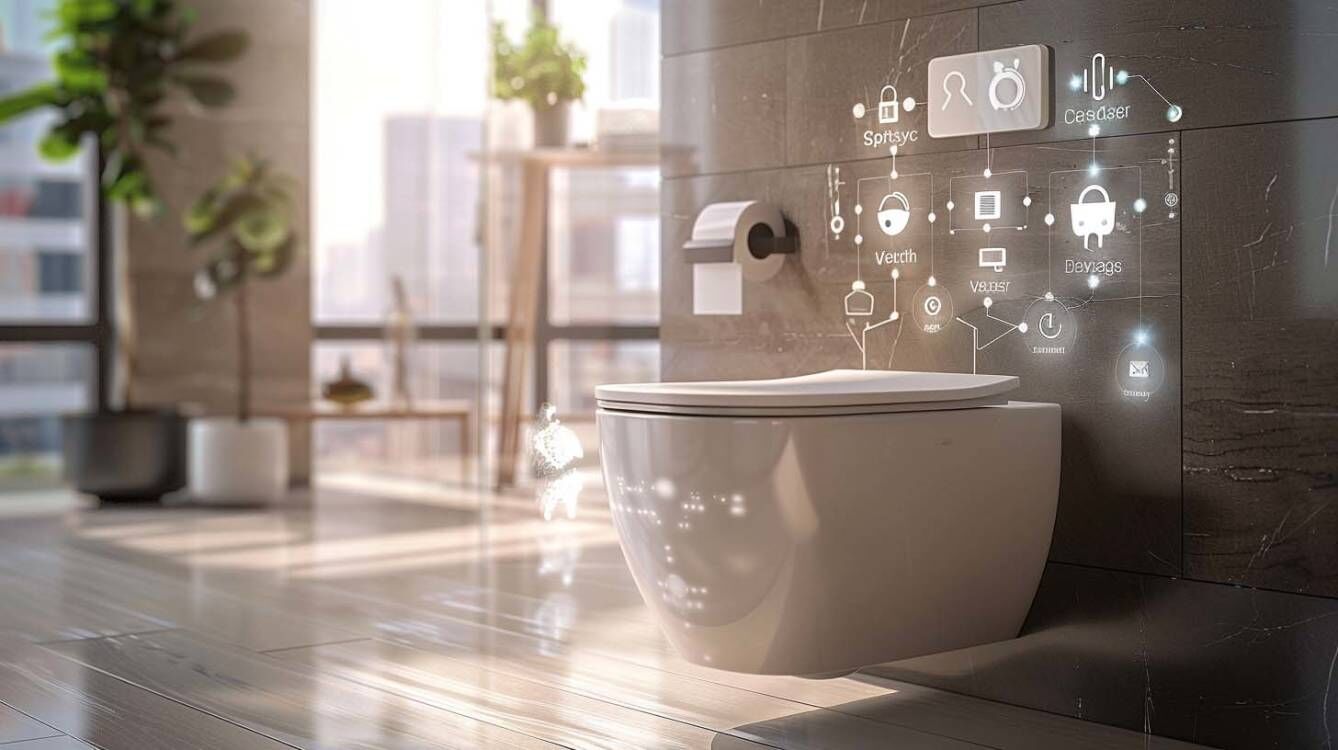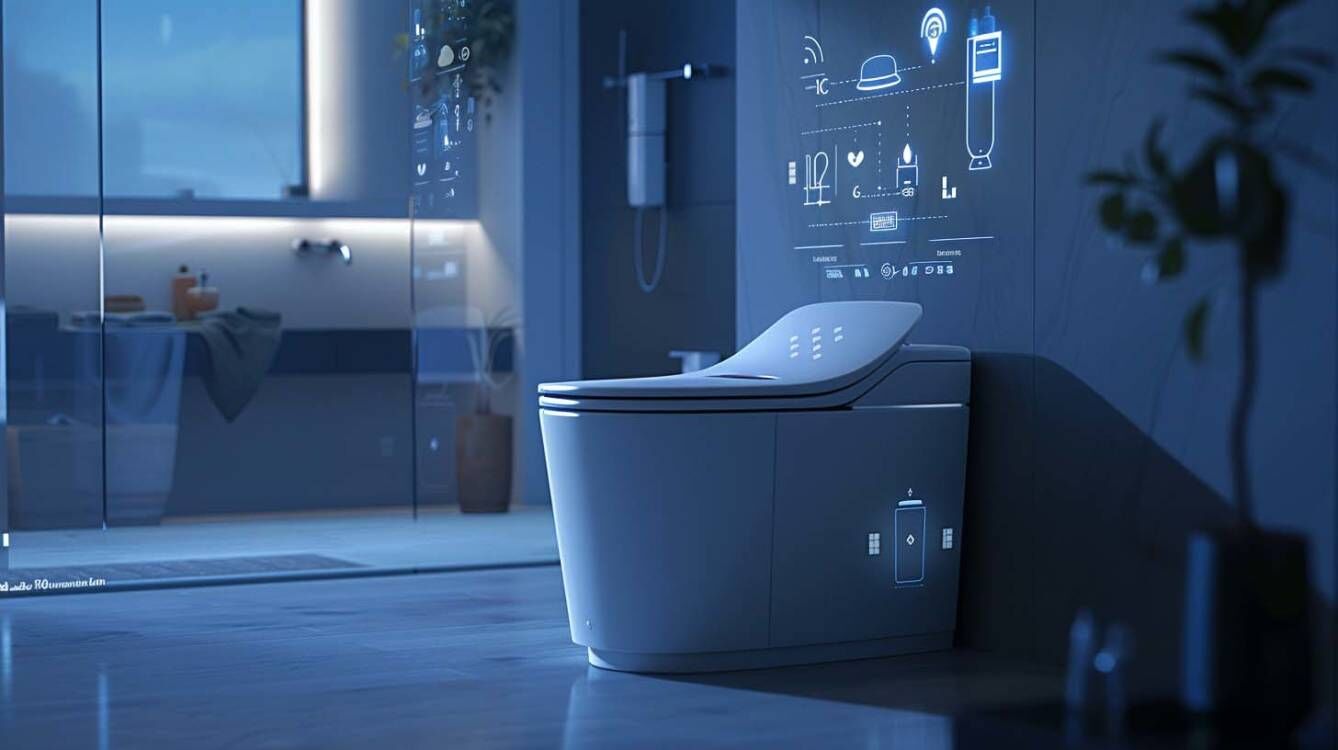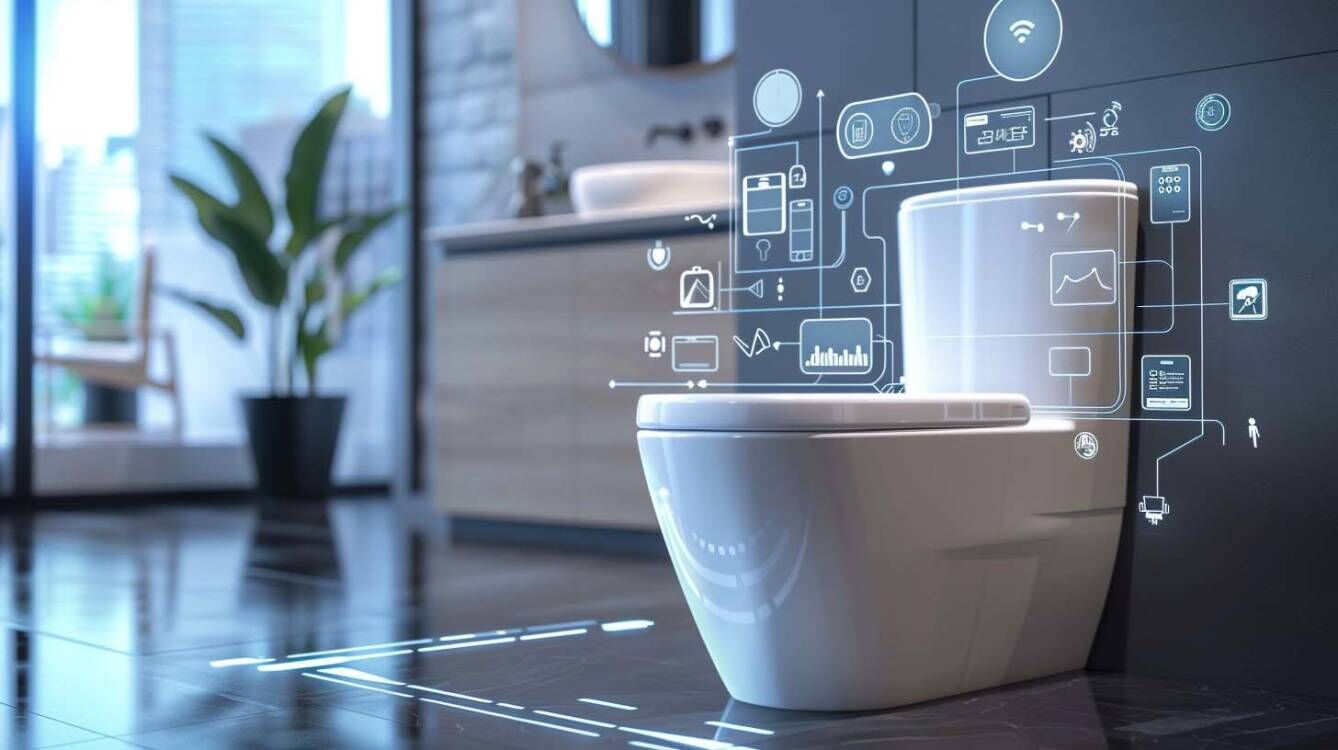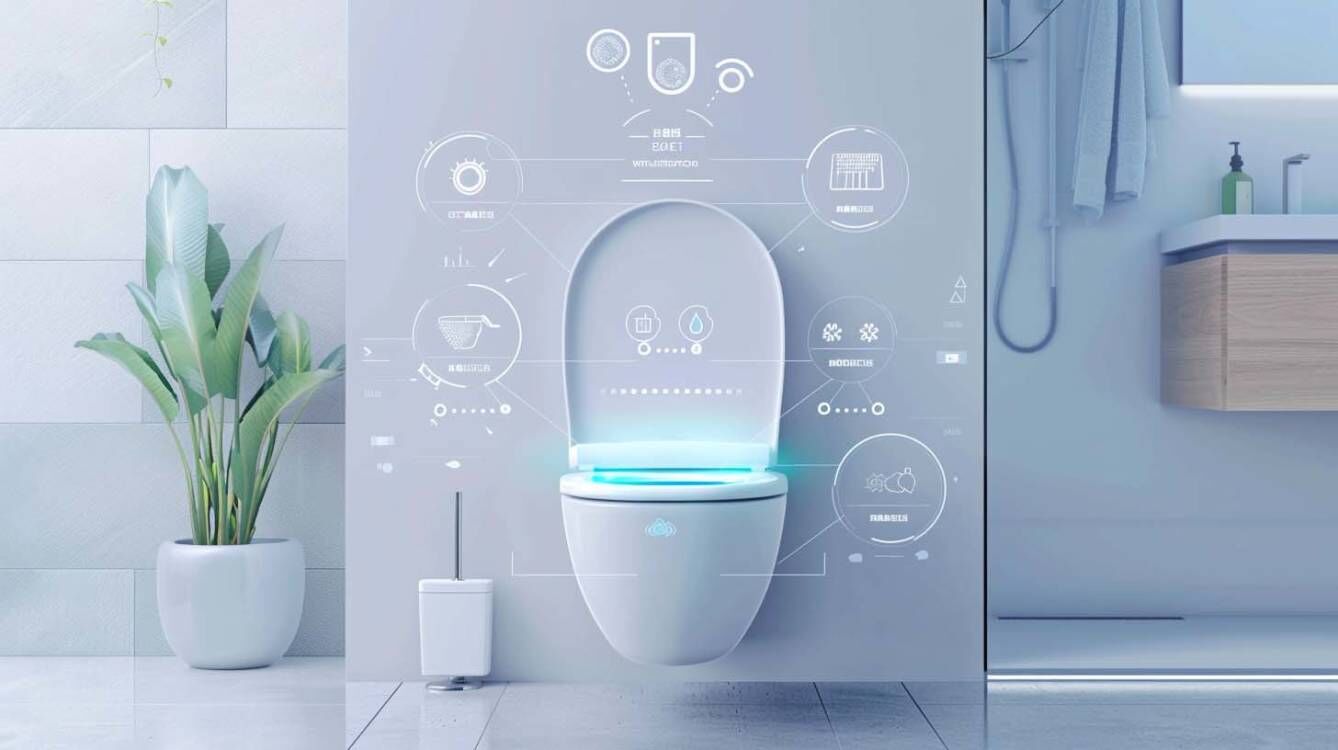In the evolving landscape of smart home technology, smart toilets represent a significant leap forward in integrating convenience and hygiene into the personal care routines of individuals. Equipped with features such as automated flushing, self-cleaning capabilities, and health monitoring tools, these devices extend far beyond the basic functionalities of traditional toilets. They not only aim to enhance comfort and cleanliness but also work to conserve water and energy. However, the implications of such sophisticated technology in a bathroom setting raise questions about privacy, cost, and the overall necessity of these features in daily life. What are the broader impacts of adopting such an advanced fixture in our homes?
- A smart toilet automates flushing and features seat warming, bidet washing, and deodorizing systems.
- It includes sensors for presence detection to enhance user convenience and energy efficiency.
- Smart toilets offer health monitoring capabilities, analyzing waste to provide wellness insights.
- They connect to IoT platforms for remote management and integration with smart home systems.
- Self-cleaning technologies like UV sterilization maintain cleanliness and hygiene automatically.

Smart toilets commonly integrate advanced features such as automated flushing, bidet washing, and seat warming to enhance user comfort and hygiene. These sophisticated fixtures are designed with precision sensors that detect presence and movement, thereby automating the flushing mechanism. This feature not only facilitates a hands-free operation but also contributes to water conservation by adjusting the volume of water used based on the duration of use.
The inclusion of bidet functionality offers a hygienic alternative to traditional toilet paper, providing gentle and effective cleansing with adjustable water temperature and pressure settings. This can be particularly beneficial for individuals with mobility issues, as it guarantees thorough cleanliness without the need for physical exertion.
Seat warming technology addresses the discomfort associated with cold toilet seats, especially in cooler climates. The temperature control is customizable, allowing users to select a warmth level that fits their personal preference.
Furthermore, many smart toilets are equipped with deodorizing systems that automatically neutralize odors, maintaining a fresh environment in the bathroom. This is achieved through integrated fans and air purifiers that circulate and clean the air after each use. These features collectively enhance the overall user experience, promoting not only comfort but also environmental sustainability and personal hygiene.
To fully appreciate the capabilities and advantages of smart toilets, it is vital to explore their technological innovations and practical benefits. Smart toilets are a blend of advanced computing and plumbing, designed to enhance user convenience and hygiene. These devices integrate sensors, internet connectivity, and automated mechanisms to revolutionize the standard bathroom experience.
At the core of smart toilet technology is the ability to automate functions such as flushing, seat temperature regulation, and lid operation. Sensors can detect presence and movement, adjusting features accordingly to minimize physical contact and maintain cleanliness. Additionally, some models come equipped with health-monitoring capabilities, analyzing waste to provide insights into the user's well-being.
Smart toilets also feature customizable user profiles, which can remember preferences for different individuals, adjusting water and seat temperatures or spray intensities. Connectivity with other smart devices through IoT platforms allows for seamless integration into a holistic smart home ecosystem.
Upgrades in design also include self-cleaning features like UV sterilization and automated deodorizers, enhancing the hygiene aspect significantly.
Understanding these components is vital for anyone considering an investment in smart bathroom technology, highlighting a noteworthy shift towards more intelligent and responsive home environments.

Understanding the technological innovations and practical benefits of smart toilets naturally leads us to ponder the myriad advantages that these advanced fixtures offer when installed in modern homes. One of the primary benefits is the enhanced hygiene facilitated by features such as self-cleaning capabilities and touch-free technology. These toilets minimize the need for physical contact, reducing the spread of germs and maintaining a cleaner environment.
Also, many smart toilets are equipped with bidet functions and air drying, further promoting sanitary conditions.
Smart toilets also contribute to significant water conservation. Equipped with intelligent systems, they optimize flush settings based on the waste type, thereby reducing unnecessary water usage. Some models incorporate vacuum technology that requires even less water per flush, aligning with sustainable living goals.
Additionally, the customizability of smart toilets caters to personal comfort and convenience. Features such as heated seats, adjustable water temperature, and pressure settings allow users to tailor their experiences. Moreover, for individuals with mobility issues, the automatic features like seat lifting and gentle closing enhance accessibility, making these smart toilets a beneficial addition to any household aiming for modernization and improved quality of life.
Despite their advanced features, smart toilets are designed for ease of maintenance with self-cleaning functions and simplified access to internal components. Manufacturers understand that for technology to be embraced, it must not only advance functionality but also simplify upkeep. The design of smart toilets reflects a commitment to both innovation and user convenience.
Smart toilets incorporate various features that automate maintenance and ensure longevity:
1. **Self-Cleaning Technology**: Many models come with automatic cleaning systems that use UV light or electrolyzed water to sanitize the bowl and seat, substantially reducing the need for manual scrubbing.
2. **Modular Design**: Components are often modular, making them easily replaceable. This design simplifies repairs, as individual parts can be accessed and replaced without the need to dismantle the entire unit.
3. **Advanced Materials**: The use of hydrophobic coatings and special ceramics resists waste sticking and staining, which helps maintain cleanliness and functionality over time.
These elements demonstrate the industry's focus on creating products that are not only technologically advanced but also practical from a maintenance perspective.
Smart toilets are designed to alleviate the traditional burdens of bathroom upkeep, making them an appealing choice for those who value both innovation and convenience.

Considering the ease of maintenance and advanced features of smart toilets, one may wonder if investing in one is a prudent decision for their household. Smart toilets offer a plethora of functionalities that traditional toilets cannot match, such as automatic lids, self-cleaning capabilities, built-in bidets, and customizable user settings for temperature and water pressure. These features not only enhance personal hygiene but also contribute to water conservation and reduced household waste.
From a technical perspective, smart toilets incorporate sensors and connectivity that allow for diagnostics and real-time monitoring of water usage and efficiency. This can lead to significant savings in water bills and maintenance costs over time. Additionally, the integration with smart home systems can provide an added level of convenience and control, enabling users to customize and optimize their bathroom experience through voice commands or mobile applications.
The decision to invest in a smart toilet should consider the initial cost versus long-term benefits. While the upfront expenditure may be higher than that of a traditional toilet, the potential savings, enhanced hygiene, environmental benefits, and user convenience make it a worthwhile consideration for those prioritizing innovation in home appliances.
Yes, smart toilets can analyze health metrics from waste, utilizing advanced sensors and AI technologies to monitor indicators such as glucose levels, potential infections, and other wellness markers directly from excreta.
Smart toilets generally support major mobile operating systems such as iOS and Android, facilitating broad compatibility for innovative health monitoring and personalized user settings via dedicated apps on smartphones and tablets.
Smart toilets recognize various voice commands, including flushing, lid opening/closing, and activating bidet functions. Compatibility with digital assistants like Alexa or Google Assistant enhances the user experience through seamless, hands-free operation.
Smart toilets greatly reduce home water consumption through advanced technologies like automatic flushing, precise water usage control, and leak detection, contributing to substantial water savings and promoting environmentally sustainable living.
Smart toilets generally do not require special cleaning products; regular mild cleaners suffice. However, it's advisable to avoid harsh chemicals that could damage electronic components or the specialized surface finishes often used.

To sum up, the irony of using a device as advanced as a smart toilet for such ordinary tasks as flushing and deodorizing starkly emphasizes the intersection of technology and daily human experience.
While these toilets offer futuristic features meant to improve comfort and efficiency, they also mirror a wider societal change towards automation in even the most personal of areas, indicating a future where convenience is key, and even the most basic of tasks are technologically optimized.